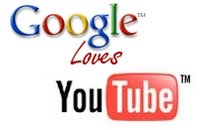Our third informal Portland BarCamp Meetup has been scheduled! Any local techies are welcome to attend.
When: Thursday, November 30
Time: 6:00pm – 9:00 pm
Where: Jive Software Office (317 SW Alder St Ste 500)
Sponsored by: Jive Software
Jive Software is located on Alder near 3rd. Parking is available in a nearby parking garage, and it is short walk from the Max (directions to Jive Software).
If you plan to attend, please RSVP on the Portland BarCamp Meetup wiki (RSVP required):
The meetup will be very informal and similar in format to previous meetings. We’ll do a few introductions, talk for a few minutes about organizing the BarCamp, and then see where the discussion goes.
If you would like to receive notifications about any last minute changes, future meetups, and other PortlandBarCamp communications, please join our Google Group to receive email announcements.

Subscribe to BarCampPortland
We have also created a BarCamp Portland Google Calendar for upcoming events. The next event will be held in January.
We are also trying to gain support for a real BarCamp event in Portland. We will start the planning process when we get enough people signed up on the Wiki, so please add yourself to the wiki if you want to attend a Portland BarCamp event!






